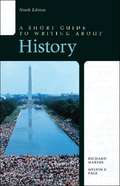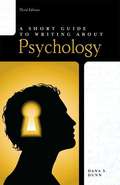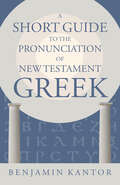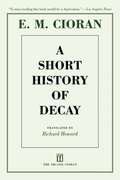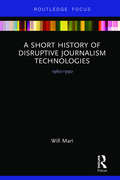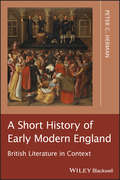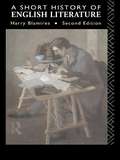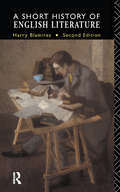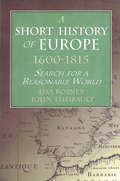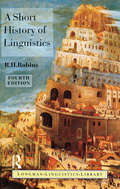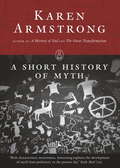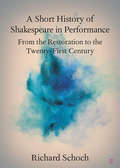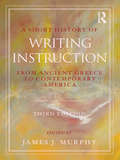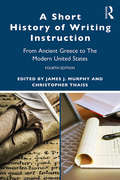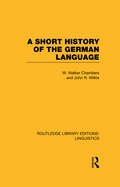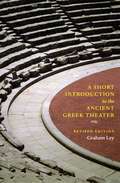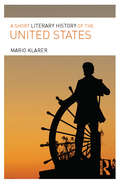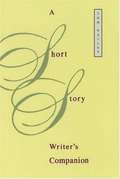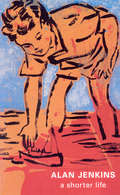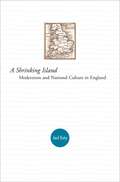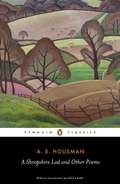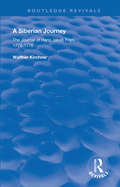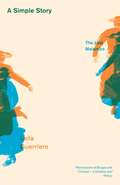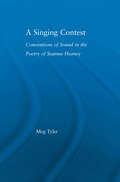- Table View
- List View
A Short Guide to Writing about History (9th Edition)
by Richard A. Marius Melvin E. PageA Short Guide to Writing about History is an ideal complement for any history course intended to teach students to think and write like historians. This engaging and practical text will teach students how to go beyond reporting the basic dates and facts of their history books and show them how to infuse their writing with their own ideas and unique perspective. Covering brief essays and the documented resource paper, the text explores the writing and researching processes, different modes of historical writing (including argument), and offers guidelines for improving style as well as documenting sources.
A Short Guide to Writing about Psychology, Third Edition
by Dana S. DunnFeaturing the latest APA-style guidelines, this concise guide helps readers master the skills and conventions they need to write well in psychology. This brief guide takes readers step-by-step through the writing process. In addition, it presents thorough discussions of researching psychological literature, focusing on online and database research, and presenting those findings in written and oral formats. Special attention is given to interpreting and reporting the results of statistical tests, as well as preparing data displays in tables and figures. Introducing readers to all elements of professional writing in APA style, this book is a perfect supplement for courses in the social science disciplines.
A Short Guide to the Pronunciation of New Testament Greek (Eerdmans Language Resources)
by Benjamin KantorWhat did the apostles&’ Greek sound like?How should New Testament Greek be pronounced in our classrooms? Often students are taught Erasmian pronunciation, which does not even reproduce Erasmus&’s own pronunciation faithfully, let alone that of the New Testament authors. But if we want to process the language of the New Testament the same way its original authors and readers did, we should use their pronunciation. In his new book, Benjamin Kantor breaks a path toward an authentic pronunciation of Koine Greek at the time of the New Testament, seeking to improve students&’ reading proficiency.A Short Guide to the Pronunciation of New Testament Greek distills Kantor&’s new monograph, The Pronunciation of New Testament Greek, with an eye toward practical instruction. The first comprehensive phonological and orthographic study of Judeo-Palestinian Koine Greek, The Pronunciation of New Testament Greek surveys thousands of inscriptions and papyri to determine historical pronunciation. A Short Guide gives students an overview of the basics of phonology before explaining the pronunciation of each Greek letter and phoneme individually. Perfect for classroom use, this guide explains Kantor&’s cutting-edge research accessibly and includes sample texts for reading practice.
A Short History of Decay
by E. M. Cioran Eugene ThackerE. M. Cioran confronts the place of today's world in the context of human history-focusing on such major issues of the twentieth century as human progress, fanaticism, and science-in this nihilistic and witty collection of aphoristic essays concerning the nature of civilization in mid-twentieth-century Europe. Touching upon Man's need to worship, the feebleness of God, the downfall of the Ancient Greeks and the melancholy baseness of all existence, Cioran's pieces are pessimistic in the extreme, but also display a beautiful certainty that renders them delicate, vivid, and memorable. Illuminating and brutally honest, A Short History of Decay dissects Man's decadence in a remarkable series of moving and beautiful pieces.
A Short History of Disruptive Journalism Technologies: 1960-1990 (Disruptions)
by Will MariA Short History of Disruptive Journalism Technologies provides a swift analysis of the computerization of the newsroom, from the mid-1960s through to the early 1990s. It focuses on how word processing and a number of related affordances, including mobile-reporting tools, impacted the daily work routines of American news workers. The narrative opens with the development of mainframes and their attendant use as databases in large, daily newspapers, It moves on to the "minicomputer" era and explores initial news-worker experiences with computers for editing and publication. Following this, the book examines the microprocessor era, and the rise of "smart" terminals, "microcomputers," and off-the-shelf hardware/software, along with the increasing use of computers in smaller news organizations. Mari then turns to the use of pre-internet networks, wire-services and bulletin boards deployed for user interaction. He looks at the integration of decentralized computer networks in newsrooms, with a mix of content-management systems and PCs, and the increasing use of pagers and cellphones for news-gathering, including the shift from "portable" to mobile conceptualizations for these technologies. A Short History of Disruptive Journalism Technologies is an illuminating survey for students and instructors of journalism studies. It represents an important acknowledgement of the impact of pre-internet technological disruptions which led to the even more disruptive internet- and related computing technologies in the latter 1990s and through the present.
A Short History of Early Modern England: British Literature in Context
by Peter C. HermanA Short History of Early Modern England presents the historical and cultural information necessary for a richer understanding of English Renaissance literature. Written in a clear and accessible style for an undergraduate level audience Gives an overview of the period’s history as well as an understanding of the historiographic issues Explores key historical and literary events, from the Wars of the Roses to the publication of John Milton’s Paradise Regained Features in depth explanations of key terms and concepts, such as absolutism and the Elizabethan Settlement
A Short History of English Literature
by Harry BlamiresFirst published in 2012. Routledge is an imprint of Taylor & Francis, an informa company.
A Short History of English Literature
by Harry BlamiresThis book guides through some six centuries of English literature, beginning with Chaucer's time, and goes on to analyse the background, interconnections and major achievements of individual writers in each period. It is useful to the student of English literature and to the general reader.
A Short History of Europe, 1600-1815: Search for a Reasonable World
by Lisa Rosner John TheibaultA concise survey that introduces readers to the people, ideas, and conflicts in European history from the Thirty Years' War to the Napoleonic Era. The authors draw on gender studies, environmental history, anthropology and cultural history to frame the essential argument of the work.
A Short History of Linguistics (Longman Linguistics Library)
by R.H. RobinsThis complete revision and updating of Professor Robins' classic text offers a comprehensive account of the history of linguistic thought from its European origins some 2500 years ago to the present day. It examines the independent development of linguistic science in China and Medieval Islam, and especially in India, which was to have a profound effect on European and American linguistics from the end of the eighteenth century.The fourth edition of A Short History of Linguistics gives a greater prominence to the work of Wilhelm von Humboldt, because of the lasting importance of his work on language in relation to general eighteenth century thinking and of its perceived relevance in the latter half of the twentieth century to several aspects of generative grammatical theory. The final section, covering the twentieth century, has been rewritten and divided into two new chapters, so as to deal effectively with the increasingly divergent development of descriptive and theoretical linguistics that took place in the latter half of this century.Readable and authoritative, Professor Robins' introduction provides a clear and up-to-date overview of all the major issues in the light of contemporary scholarly debate, and will be essential reading for undergraduate and graduate students of linguistics alike.
A Short History of Myth (Myths series)
by Karen ArmstrongWhat are myths? How have they evolved? And why do we still so desperately need them? A history of myth is a history of humanity, Karen Armstrong argues in this insightful and eloquent book: our stories and beliefs, our attempts to understand the world, link us to our ancestors and each other. This is a brilliant and thought-provoking introduction to myth in the broadest sense - from Palaeolithic times to the "Great Western Transformation" of the last 500 years - and why we dismiss it only at our peril.From the Trade Paperback edition.
A Short History of Shakespeare in Performance: From the Restoration to the Twenty-First Century (Elements in Shakespeare Performance)
by Richard SchochA Short History of Writing Instruction: From Ancient Greece to Contemporary America
by James J. MurphyShort enough to be synoptic, yet long enough to be usefully detailed, A Short History of Writing Instruction is the ideal text for undergraduate courses and graduate seminars in rhetoric and composition. It preserves the legacy of writing instruction from antiquity to contemporary times with a unique focus on the material, educational, and institutional context of the Western rhetorical tradition. Its longitudinal approach enables students to track the recurrence over time of not only specific teaching methods, but also major issues such as social purpose, writing as power, the effect of technologies, the rise of vernaculars, and writing as a force for democratization. The collection is rich in scholarship and critical perspectives, which is made accessible through the robust list of pedagogical tools included, such as the Key Concepts listed at the beginning of each chapter, and the Glossary of Key Terms and Bibliography for Further Study provided at the end of the text. Further additions include increased attention to orthography, or the physical aspects of the writing process, new material on high school instruction, sections on writing in the electronic age, and increased coverage of women rhetoricians and writing instruction of women. A new chapter on writing instruction in Late Medieval Europe was also added to augment coverage of the Middle Ages, fill the gap in students’ knowledge of the period, and present instructional methods that can be easily reproduced in the modern classroom.
A Short History of Writing Instruction: From Ancient Greece to Contemporary America
by James J. MurphyThis newly revised Thirtieth Anniversary edition provides a robust scholarly introduction to the history of writing instruction in the West from Ancient Greece to the present-day United States. It preserves the legacy of writing instruction from antiquity to contemporary times with a unique focus on the material, educational, and institutional context of the Western rhetorical tradition. Its longitudinal approach enables students to track the recurrence over time of not only specific teaching methods, but also major issues such as social purpose, writing as power, the effect of technologies, orthography, the rise of vernaculars, writing as a force for democratization, and the roles of women in rhetoric and writing instruction. Each chapter provides pedagogical tools including a Glossary of Key Terms and a Bibliography for Further Study. In this edition, expanded coverage of twenty-first-century issues includes Writing Across the Curriculum pedagogy, pedagogy for multilingual writers, and social media. A Short History of Writing Instruction is an ideal text for undergraduate and graduate courses in writing studies, rhetoric and composition, and the history of education.
A Short History of the German Language (Routledge Library Editions: Linguistics)
by William Walker Chambers John Ritchie WilkieThis simple introduction to the history of the German language seeks to provide students who have some knowledge of modern German, but no knowledge either of its development or of linguistic theories, with a short account of the essential factors – chronological, geographical and linguistic – and their interrelation. The material is arranged in three parts. The first traces the history of the German language from its origins in Indo-European through the pre-documentary Germanic period and the Middle Ages to the present day. In the second part the development of the German vocabulary is described, including word formation, borrowing, and change in meaning; and the book concludes with a section on changes in sounds, grammatical forms, and syntax. Emphasis is placed on the development of the standard literary language in its historical and social context, while such topics as dialects and the relationship of German to other Germanic and European languages are treated very briefly as the need arises. The inclusion of maps, some specimen passages of German its early stages, suggestions for further reading after each chapter, and an extensive classified bibliography also contribute to making this a useful introduction to the subject and a reliable foundation for more advanced work.
A Short Introduction to the Ancient Greek Theater
by Graham LeyContemporary productions on stage and film, and the development of theater studies, continue to draw new audiences to ancient Greek drama. With observations on all aspects of performance, this volume fills their need for a clear, concise account of what is known about the original conditions of such productions in the age of Pericles. Reexamining the surviving plays of Aeschylus, Sophocles, Euripides, and Aristophanes, Graham Ley here discusses acting technique, scenery, the power and range of the chorus, the use of theatrical space, and parody in their plays. In addition to photos of scenes from Greek vases that document theatrical performance, this new edition includes notes on ancient mime and puppetry and how to read Greek playtexts as scripts, as well as an updated bibliography. An ideal companion to The Complete Greek Tragedies, also published by the University of Chicago Press, Ley’s work is a concise and informative introduction to one of the great periods of world drama. "Anyone faced with Athenian tragedy or comedy for the first time, in or out of the classroom, would do well to start with A Short Introduction to Ancient Greek Theater."—Didaskalia
A Short Literary History of the United States
by Mario KlarerA Short Literary History of the United States offers an introduction to American Literature for students who want to acquaint themselves with the most important periods, authors, and works of American literary history. Comprehensive yet concise, it provides an essential overview of the different currents in American literature in an accessible, engaging style. This book features: the pre-colonial era to the present, including new media formats the evolution of literary traditions, themes, and aesthetics readings of individual texts, contextualized within American cultural history literary theory in the United States a core reading list in American Literature an extended glossary and study aid. This book is ideal as a companion to courses in American Literature and American Studies, or as a study aid for exams.
A Short Story Writer's Companion
by Tom BaileyIdeal for anyone interested in writing short stories or for introductory courses in fiction writing, A Short Story Writer's Companion is a highly accessible guide to the craft of creating short fiction. Written in an engaging style, this book enables beginning writers to recognize what works in writing short stories, what doesn't, and why. Part One of A Short Story Writer's Companion discusses fictional truth and significant detail, helping students of the form to make good sense of the often taught creative writing maxim, "Show, don't tell!" Part Two delves into the elements of fiction: character, point of view, plot, setting and time, metaphor, and voice. The author uses specific examples from a variety of widely anthologized short stories to demonstrate how each component functions as a part of the whole and offers advice on the techniques of using each of the elements successfully. Part Three closely examines the fiction-writing process and helps guide writers who may never have written a short story before through drafting, revising, and polishing short stories of their own.
A Shorter Life
by Alan JenkinsIn his most eloquent and formally satisfying collection to date, Alan Jenkins plays a series of powerful and haunting variations on love and loss. The themes that run through our lives are relatively few, for all that they sound subtly different to each of us, with their own rich freight of places and faces. In poems that pay homage to what is unique to his own past experience - a suburban fifties upbringing, a heady youth of rebellion and exploration - Jenkins reminds us vividly of what is experienced by us all. The search for love (or failing that, sex), the passing of time and the inevitability of pain and grief, the struggle for transcendence against our awareness of limitation: these are the things that can suddenly seem to compose a life - a life not so much reduced to essentials as seen in its passionate essence, a 'shorter' life. Though not in any formal sense a sequel, this poignant book recapitulates some of the motifs of The Drift (2000) and earlier volumes, to offer an extended meditation on memory and recurrence, and a statement - compelling, candid, sorrowful and subtle - of life's beauty and brevity.
A Shrinking Island: Modernism and National Culture in England
by Joshua EstyThis book describes a major literary culture caught in the act of becoming minor. In 1939, Virginia Woolf wrote in her diary, "Civilisation has shrunk." Her words captured not only the onset of World War II, but also a longer-term reversal of national fortune. The first comprehensive account of modernism and imperialism in England, A Shrinking Island tracks the joint eclipse of modernist aesthetics and British power from the literary experiments of the 1930s through the rise of cultural studies in the 1950s. Jed Esty explores the effects of declining empire on modernist form--and on the very meaning of Englishness. He ranges from canonical figures (T. S. Eliot and Virginia Woolf) to influential midcentury intellectuals (J. M. Keynes and J.R.R. Tolkien), from cultural studies pioneers (Raymond Williams and E. P. Thompson) to postwar migrant writers (George Lamming and Doris Lessing). Focusing on writing that converts the potential energy of the contracting British state into the language of insular integrity, he argues that an anthropological ethos of cultural holism came home to roost in late-imperial England. Esty's interpretation challenges popular myths about the death of English literature. It portrays the survivors of the modernist generation not as aesthetic dinosaurs, but as participants in the transition from empire to welfare state, from metropolitan art to national culture. Mixing literary criticism with postcolonial theory, his account of London modernism's end-stages and after-lives provides a fresh take on major works while redrawing the lines between modernism and postmodernism.
A Shropshire Lad and Other Poems: The Collected Poems of A.E. Housman
by A.E. HousmanA. E. Housman was one of the best-loved poets of his day, whose poems conjure up a potent and idyllic rural world imbued with a poignant sense of loss. They are expressed in simple rhythms, yet show a fine ear for the subtleties of metre and alliteration. His scope is wide - ranging from religious doubt to intense nostalgia for the countryside. This volume brings together 'A Shropshire Lad' (1896) and 'Last Poems' (1922), along with the posthumous selections 'More Poems' and 'Additional Poems', and three translations of extracts from Aeschylus, Sophocles and Euripides that display his mastery of Classical literature.
A Siberian Journey: The Journal of Hans Jakob Fries, 1774 -1776 (Routledge Revivals)
by Hans J. FriesFirst published in 1955 in German, this journal, published here in English for the first time, describes the adventures of a young Swiss surgeon who sought his fortune in eighteenth-century Russia, where he eventually made his mark and rose to a high position. The journal covers his journey to Southern Russia and his service there during the campaigns of 1770-74, and gives a day-by-day account of his trip through Siberia to the Chinese borders as a surgeon assisting a recruiting officer. Fries’ simple, straightforward and fresh narrative provides a vivid, human introduction to the little-known land and people of Siberia. In contrast to the more scientific specialist works of other eighteenth-century discoverers in Siberia, Fries’ account conveys the special lure of the country, with lively descriptions of the ordinary life of its inhabitants, of the town and countryside, of nature, people, customs and impressions. Their travels took the two companions through all of Siberia to the very borders of China, and we gain a valuable glimpse of the relations between Russians and Chinese at the time. Along the way we also meet numerous westerners whom a strange fate had brought to this isolated, enigmatic land. To Fries’ text is added a wide-ranging introduction by Professor Kirchner, which gives an account of the pioneering foreign scientists and tourists who travelled in Siberia during the century following the death of Peter the Great in 1725. Professor Kirchner traces the routes of their journeys, and describes the written works, some of them now classics, which ensued. The introduction thus provides an up-to-date bibliographical guide to the more elaborate and scholarly works which are supplemented by the new perspective on political and daily life in Siberia provided by the journal of Hans Jakob Fries.
A Simple Story: The Last Malambo
by Leila Guerriero Frances RiddleObsession and mastery in their purest states: the story of one dancer’s attempt to win the biggest contest of his life. Every year, at the height of summer, the remote Argentine village of Laborde holds the national malambo contest. Centuries-old, this shatteringly demanding traditional gaucho dance is governed by the most rigid rules. And this festival has one stipulation that makes it unique: the malambo is danced for up to five minutes. That may seem like nothing, but consider the world record for the hundred-meter dash is 9.58 seconds. The dance contest is an obsession for countless young men, who sacrifice their bodies and money as they strive to become the champion, knowing that if they win—in order to safeguard the title’s prestige—they can never compete again. When Leila Guerriero traveled to Laborde, one dancer’s performance took her breath away, and she spent a year following him as he prepared for the next festival. The result is this superlative piece of journalism, told with tremendous economy and power.
A Singing Contest: Conventions of Sound in the Poetry of Seamus Heaney (Studies in Major Literary Authors)
by Meg TylerFirst Published in 2005. Routledge is an imprint of Taylor & Francis, an informa company.
A Sisterhood of Sculptors: American Artists in Nineteenth-Century Rome
by Melissa DabakisThis project is made possible through support from the Terra Foundation for American Art.When Elizabeth Cady Stanton penned the Declaration of Sentiments for the first women’s rights convention, held in Seneca Falls, New York, in 1848, she unleashed a powerful force in American society. In A Sisterhood of Sculptors, Melissa Dabakis outlines the conditions under which a group of American women artists adopted this egalitarian view of society and negotiated the gendered terrain of artistic production at home and abroad. Between 1850 and 1876, a community of talented women sought creative refuge in Rome and developed successful professional careers as sculptors. Some of these women have become well known in art-historical circles: Harriet Hosmer, Edmonia Lewis, Anne Whitney, and Vinnie Ream. The reputations of others have remained, until now, buried in the historical record: Emma Stebbins, Margaret Foley, Sarah Fisher Ames, and Louisa Lander. At midcentury, they were among the first women artists to attain professional stature in the American art world while achieving international fame in Rome, London, and other cosmopolitan European cities. In their invention of modern womanhood, they served as models for a younger generation of women who adopted artistic careers in unprecedented numbers in the years following the Civil War.At its core, A Sisterhood of Sculptors is concerned with the gendered nature of creativity and expatriation. Taking guidance from feminist theory, cultural geography, and expatriate and postcolonial studies, Dabakis provides a detailed investigation of the historical phenomenon of women’s artistic lives in Rome in the mid-nineteenth century. As an interdisciplinary examination of femininity and creativity, it provides models for viewing and interpreting nineteenth-century sculpture and for analyzing the gendered status of the artistic profession.
